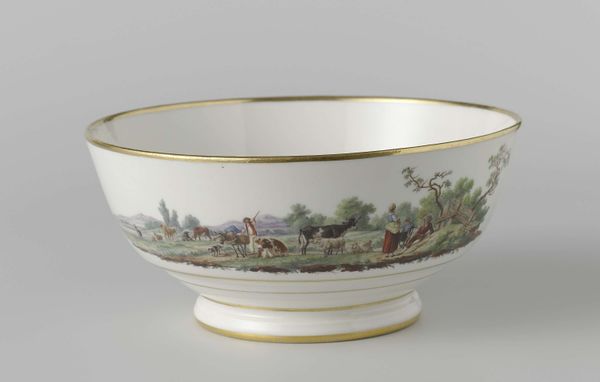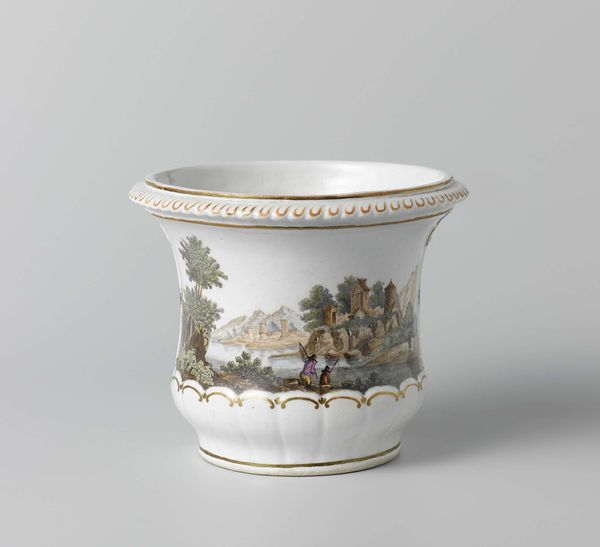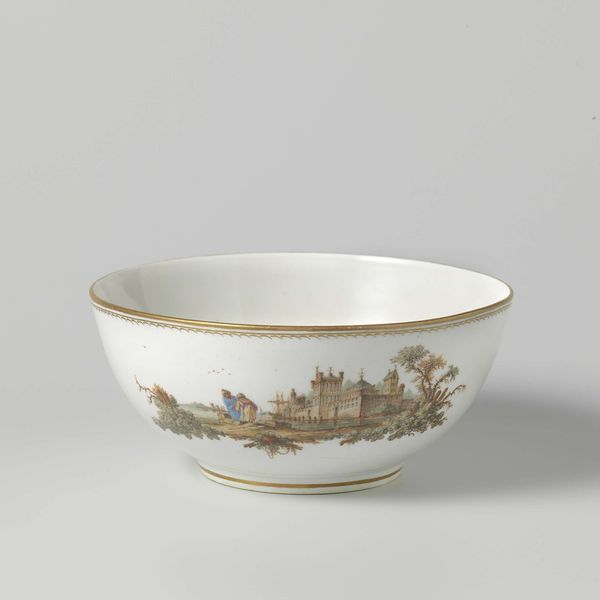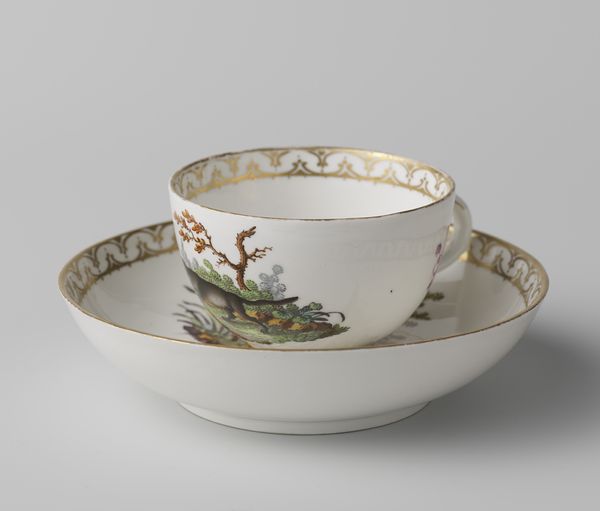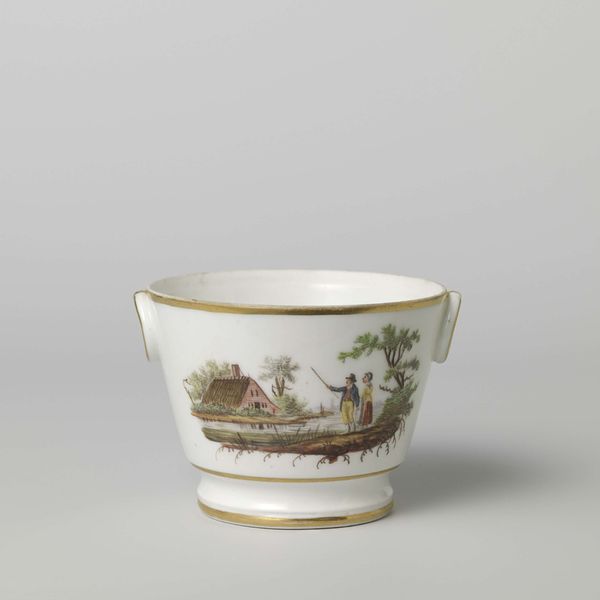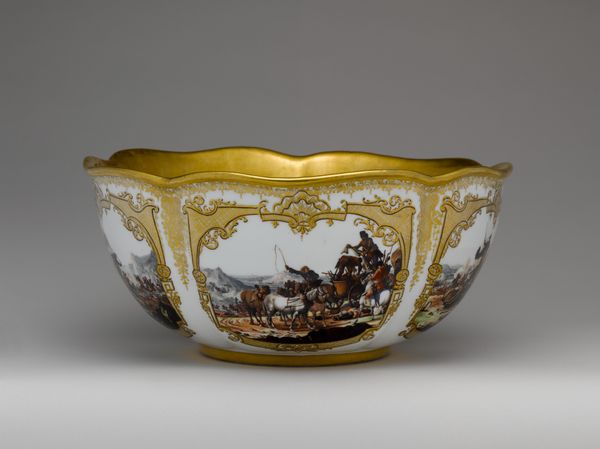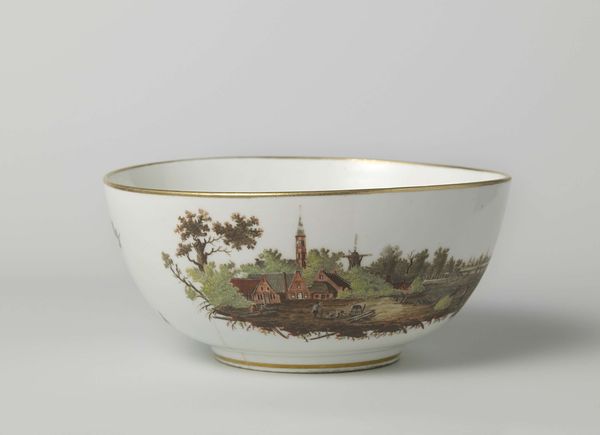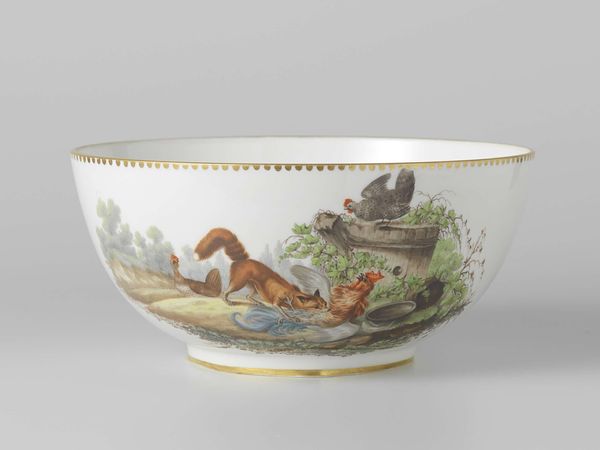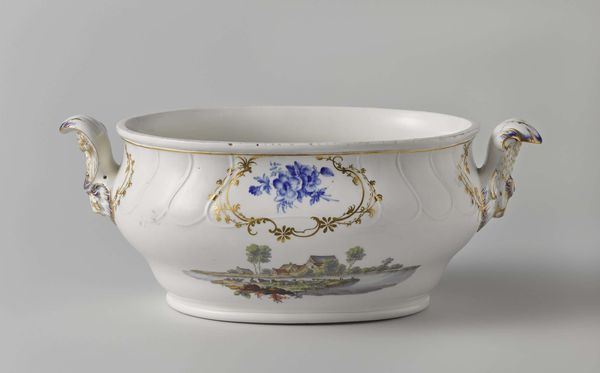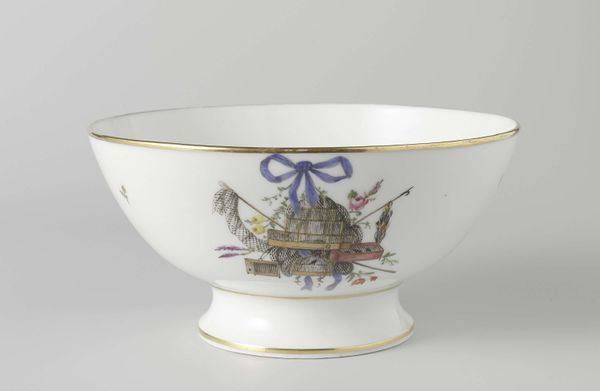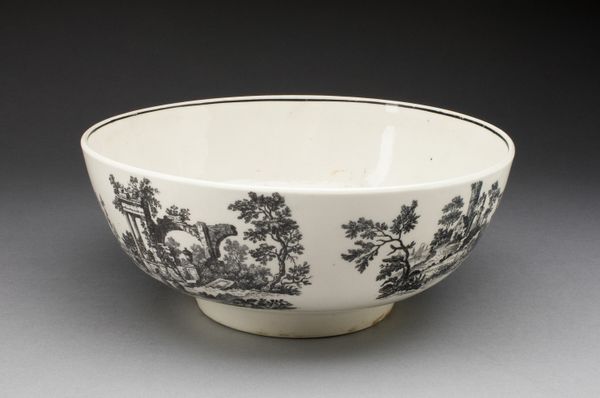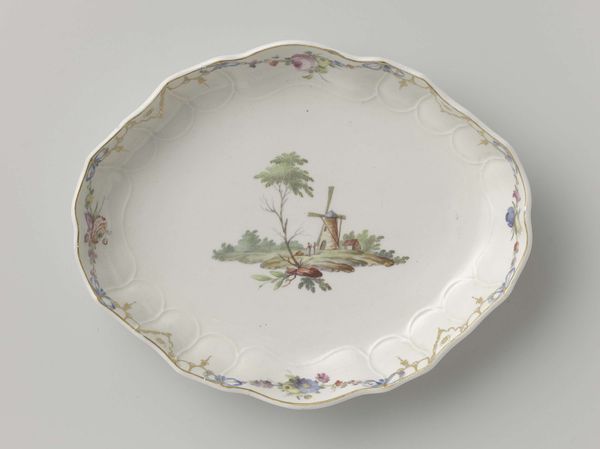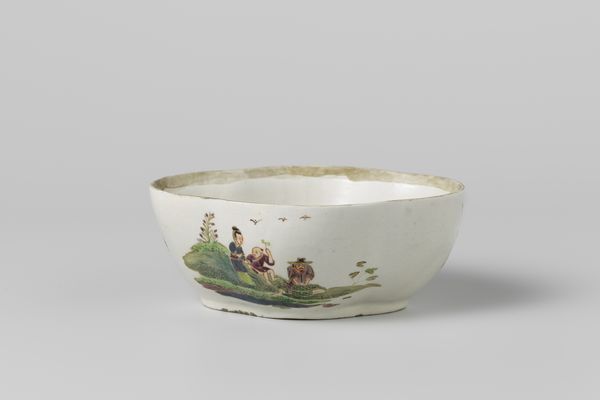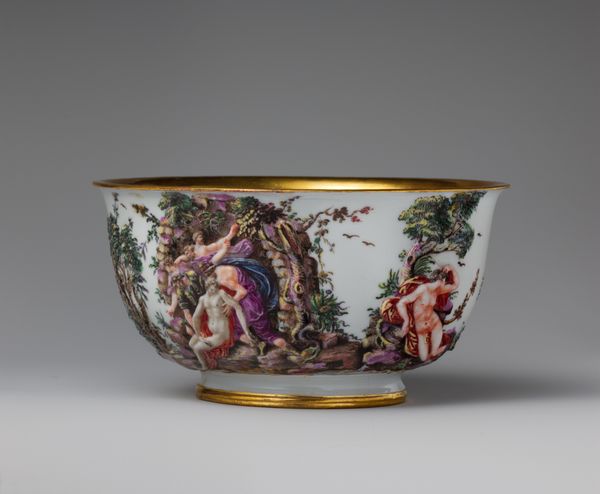
painting, ceramic
#
painting
#
landscape
#
ceramic
#
ceramic
#
genre-painting
#
decorative-art
Dimensions: height 10.9 cm, diameter 21.7 cm
Copyright: Rijks Museum: Open Domain
Curator: This is a captivating porcelain bowl, or 'Spoelkom met riviergezicht' as it's known in Dutch, crafted between 1809 and 1814 by the Koninklijke Porseleinfabriek Dommer & Co. currently held in the collection of the Rijksmuseum. Editor: The first thing that strikes me is how intimate the whole scene appears, neatly framed. There is a calmness to the depicted landscape. Curator: Indeed. It's fascinating how the form of the bowl dictates the composition. The curvature accentuates the serene river view. It has an internal logic that relies not only on representation, but form. The painted details adhere strictly to this frame, both literally in terms of the gilded edges, and allegorically, to its constraints. Editor: The presence of a church with a tall spire hints at a more structured existence outside this arcadian bubble. Is the water intended to invoke reflection or suggest freedom? Are we, as viewers, meant to project onto this rural scene? Curator: Well, Iconographically speaking, water represents both life and death, purification, the subconscious, etc. What seems most evident to me in its execution, is that the composition operates as a series of calculated pictorial planes – consider the treatment of depth and the considered application of pigment in defining shapes. There is also the very distinct interplay of negative and positive spaces that guide the viewer's eye along its delicate edge. Editor: Agreed, though perhaps the artist used that compositional tension to heighten the feeling of serenity in opposition to underlying emotional unrest. I’m especially drawn to how figures pause at its rivers edge. It's an incredibly detailed, idyllic vision. Curator: Ultimately, whether one interprets the bowl’s artistry through a symbolist lens or formal structuring, its impact remains palpable. The relationship of the artist to the material, and subsequently, our relationship to that history, creates this sense of feeling. Editor: This is what renders it so poignant. A perfectly contained reflection on life and place from centuries ago.
Comments
No comments
Be the first to comment and join the conversation on the ultimate creative platform.
